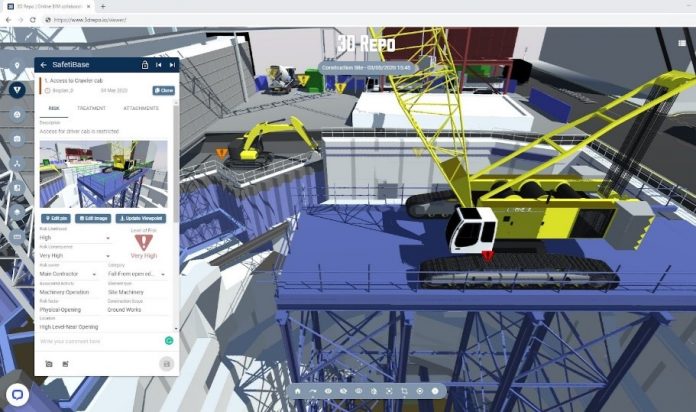Certain parts of the construction industry have made great progress in health and safety risk management and control. But the challenge remains that early risk identification and mitigation are still dependent on the expertise and experience of those around the screen
We need to find ways to harness the knowledge and experience of the experts around the table and make it automatically available when new assets are being designed.
We need to harvest and analyse data collected through monitoring, wearable tech and equipment operation and feed it back to the design process. The industry needs a step change, and technology offers the opportunity for that change.
Health and Safety risk management: whose responsibility is it anyway?
Several groups should take responsibility for health and safety over the early phases of a construction project: designer or architect, health and safety practitioner, digital practitioner and contractor. But rather than these parties working collaboratively, there is demarcation of responsibility, which can be particularly problematic at the interface between project phases.
What data offers the industry is the chance to become much more logical and clinical about the way that construction safety and health risks are identified and then prevented. But for this new approach to take hold, a culture shift must run alongside the technology adoption process, moving away from a culture of blame to one of discovery.
How can data help us to improve health and safety?
The challenge facing the industry around health and safety data is that we are only ever looking at a small part of the picture at any one time – and it is a picture based on what has already happened, rather than what might happen next. A project may be focusing on falls from height or manual handling, for instance, when the biggest risks at that time involve something completely different. We need to be data-driven rather than just experience-driven.
Open libraries of data about construction health and safety risks, and how to tackle them, would help solve this problem. Key to the usefulness of such libraries would be the way that the information is structured so that it can be searched, analysed and deployed.
Structuring data is important because it helps people to understand safety risks in new ways. By putting that structure on it, we are able to reinforce the relevance of the risk factors to the designer and ultimately to link it to incident rates. Without this structure, it can be difficult for inexperienced designers to understand why a risk category is relevant to them.
How can digital tech help to improve health and safety?
Digital technologies are already effecting positive changes to construction health and safety. These range from immersive virtual reality training for scaffolders, to wearable devices that monitor fatigue, to robots that carry out dangerous or repetitive tasks. Artificial intelligence (AI) offers huge opportunities, for instance, training machine learning algorithms to spot hazards on site.
For construction design and planning, the move from 2D designs to 3D and now 4D has hugely increased the opportunity for multiple stakeholders to communicate around a model. For those not familiar with engineering drawings, 4D visualisations offer a far more accessible way to understand what a building or facility will look and feel like in operation.
The use of federated models aids clash detection and allows different disciplines to work together. 4D models force clarity on the fuzzy interfaces between sequences of work and enable risks and problems to be discovered and dealt with in front of a screen. Now the big opportunity comes from tying outputs from these many technologies together, making better use of the huge quantities of information created and collected on projects. We can use digital tools to find better ways of managing our information.
Creating a searchable lessons-learned database for health and safety risks was the goal for those who developed SafetiBase. By assembling all stakeholders around a 4D model, health and safety considerations throughout an asset’s life can be taken into consideration and tracked. The information generated is structured and available through the cloud for other projects to benefit from.
Safer construction with SafetiBase
SafetiBase stores structured health and safety risk data in the cloud. It allows users to identify and manage health and safety risks within a 3D model. Because it uses a common schema, it can be used to benchmark project safety performance and easily share lessons across disciplines. As it is a fully integrated element of the 3D Repo platform, users from any discipline, skill level or location can easily collaborate to mitigate risk in the context of the 2D/ 3D or 4D model.
Users can draw on previously identified health and safety risks to inform the identification and mitigation of risks on their projects. A user on the 3D Repo platform can drop pins on the 3D model, complete various information fields and apply a risk rating, which will be updated as mitigating measures are applied. The system records the issues that have been considered, actions taken and who has responsibility.
The future of health and safety
3D and 4D BIM can aid the uptake and coordination of offsite construction and hybrid forms of construction, where elements of buildings and structures are manufactured as modules and transported to site at the right time.
These and other applications of digital technology mean there will be more and more data that could be mined and analysed to provide deeper insight and better outcomes. Next level data management practices combined with the deployment of artificial intelligence will help deliver that.
Download the full white paper on digitising health and safety.
*Please note: This is a commercial profile.
3D Repo

















